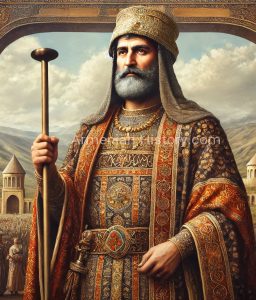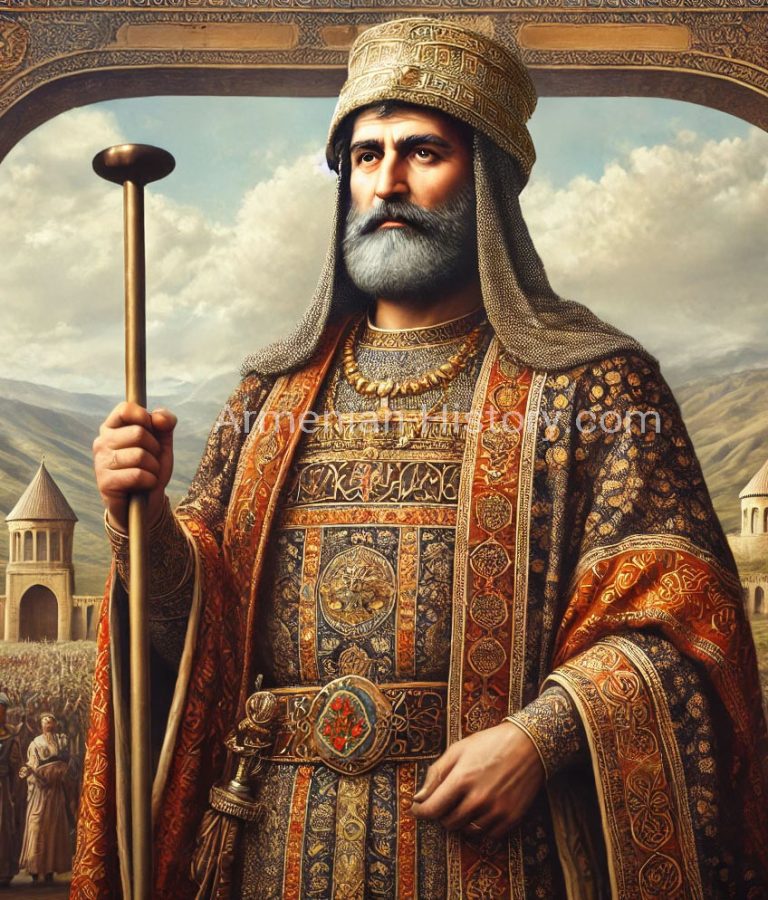Vasak Siwni (or Syuni) was a prominent Armenian noble and the marzban (governor) of the eastern territories of Greater Armenia under Persian Sassanian rule during the 5th century. Born into the prestigious Siwni (Syunik) dynasty, he played a significant role in the sociopolitical dynamics of Armenia during one of its most tumultuous periods, the Armenian rebellion against Persian rule, also known as the Vardanants War (451 AD).
The Siwni Dynasty
The Siwni dynasty was one of the most ancient and powerful noble families in Armenian history. They governed the Syunik province, which was renowned for its strategic importance, bridging the Armenian Highlands and Persia. This lineage provided the dynasty with significant regional power and a key role in mediating between Armenian kings and their foreign overlords.
Role in the Vardanants War
Vasak Siwni’s legacy is deeply tied to the events surrounding the Vardanants War. This rebellion, led by Sparapet (general) Vardan Mamikonian, was a response to the Sassanian Empire’s attempts to impose Zoroastrianism on Armenia, undermining the Christian faith that had been established as the state religion in 301 AD.
Vasak initially appeared to support the rebellion, as he was part of the council of Armenian nobles convened to oppose the Sassanian policy. However, he later shifted his allegiance, siding with the Sassanian Empire. This decision has been the subject of much historical debate. While some sources view it as a betrayal driven by personal ambition, others suggest it was a calculated move to preserve Armenian autonomy under impossible circumstances.
His defection ultimately contributed to the Persian victory at the Battle of Avarayr in 451 AD, a pivotal moment in the rebellion. Despite their loss on the battlefield, the Armenians managed to secure religious freedom in the long term, a testament to the resilience of their faith and culture.
Legacy and Controversy

Vasak Siwni’s legacy is highly polarizing. For many, he represents betrayal, as his actions are seen as undermining the unity of the Armenian resistance. However, others argue that his position as marzpet placed him in an unenviable position, caught between loyalty to his homeland and obligations to the Persian overlords.
What remains undeniable is his influence on Armenian history during a critical period. The Siwni family’s role in Armenian governance and Vasak’s controversial decisions continue to be topics of historical analysis and reflection.
In Armenian history, figures like Vasak Siwni remind us of the complexities of loyalty, governance, and survival in the face of overwhelming foreign dominance. His life serves as a lens through which we can explore the broader struggles of Armenia during the 5th century.

